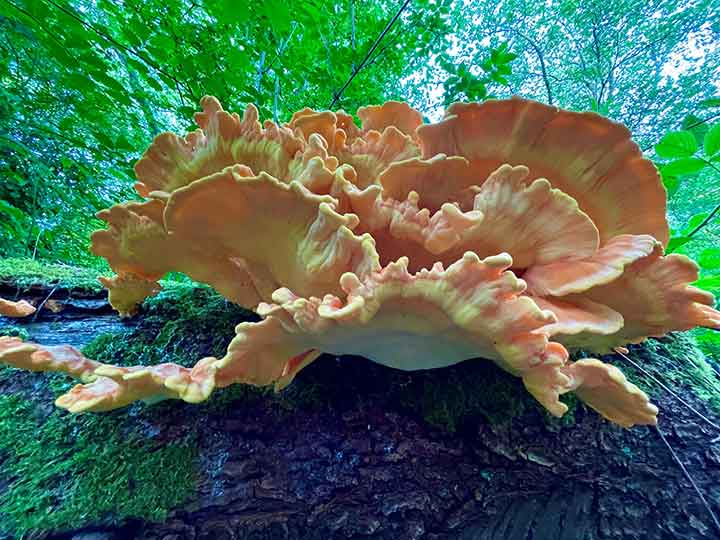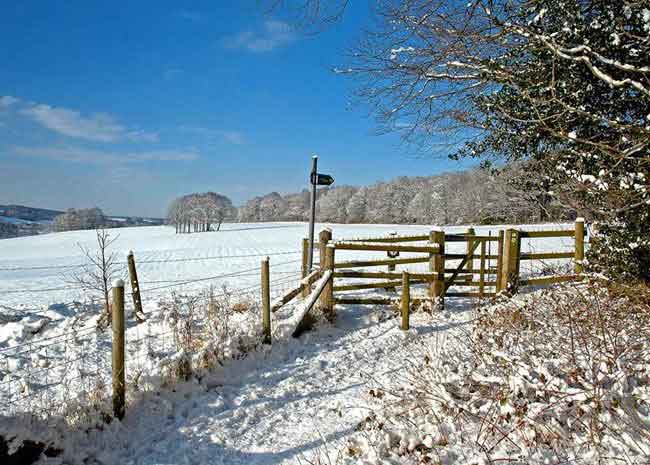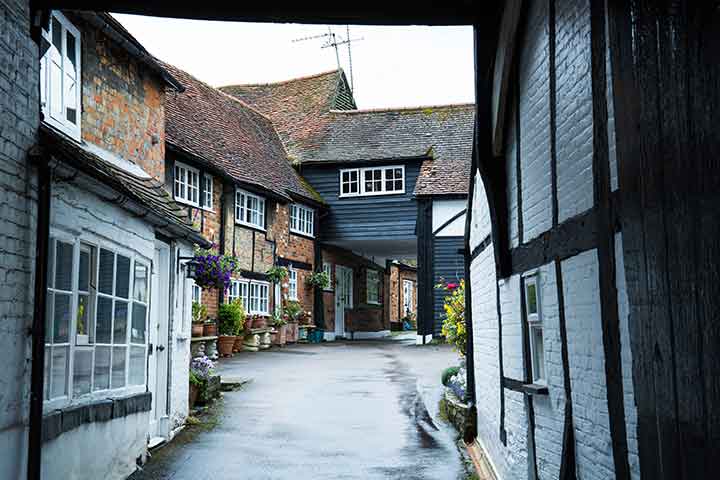Behind the hedge.
Fred Gillam celebrates mushroom hunting.
Although I’m known to many as Fred the Forager, that’s just one of the hats I wear. Others include working as a herbalist and, with my partner, running the UK & Ireland Medicinal Mushrooms Conference, as well as a busy outdoor business called The Wild Side of Life. I’ve been asked to share a little of my passion for mushrooms with you.
One of my fondest childhood memories involves the discovery of mushrooms. I remember cycling along with my friend Trevor in the early hours of the day, much as we probably did on countless other occasions that haven’t been committed to memory with such clarity. What made this early morning special as the curtain of autumn fog lifted was when, having stopped to enjoy a packed lunch made for us by my mum, we spotted a large gap at the bottom of a hawthorn hedge, with a path that was probably the regular foraging route of a badger. We decided to take a look. Trevor went through first and I remember hearing ‘ouch! WOW, look at this’, as I crawled after him.
On the other side of the hedge, I felt a sudden wave of amazement and awe, as we beheld the beauty and wonder all around us. Picture the scene: the closely rabbit-cropped grassland turf of a parkland estate, sloping gently up to a manor house in the far distance, with scattered ancient specimens of oak and lime rising high above the meadow landscape as far as the eye could see. We were beneath a small stand of perhaps a dozen or so younger trees just beyond the hedge line.
As I recall they were silver birch, beech and oak – but the fist thing that greeted us was one of the tallest, scaliest, most spectacular mushrooms I’d ever seen, together with others, some a foot tall with caps the size of dinner plates! I’d already been introduced to picking the wild ‘horse mushrooms’ by my dad, who adored their rich, meaty flavour (which was a little too much of a shock to my childhood palate), but I’d never seen anything as remarkable or striking as what stood before us that day. This being long before the era of mobile phones, I tried to make certain I’d remember what they looked like, before we fled, hearing dogs barking in the distance.
When I returned home, I pulled down one of the few general books about nature that were on my bedroom bookshelf. These didn’t feature many mushrooms, which led me to assume that there weren’t many types to be found. I recall becoming convinced that the tall specimens I’d found were some kind of ‘parasol mushroom’, and believing, with less conviction, that the boldly coloured hemispherical specimens, decorated with eye-catching white spots, were probably the equally spectacularly named ‘panther cap’, Amanita pantherina, and ‘fly agaric’, Amanita muscaria.
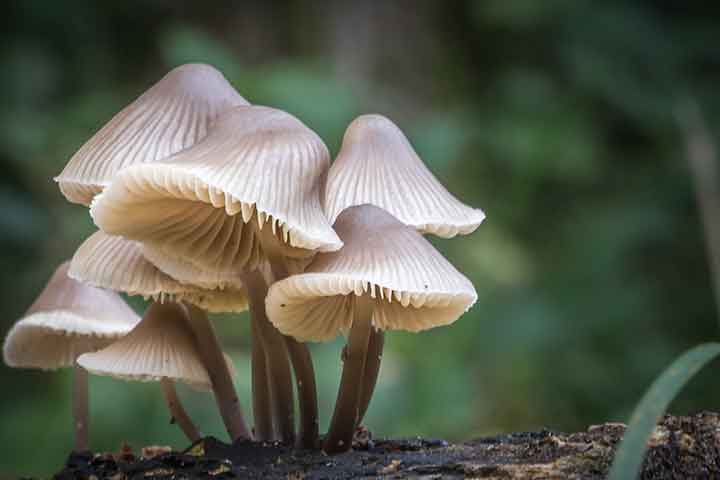
I was now smitten and hungry for knowledge. I wanted to learn everything about them, but it would be four more years before I discovered in my sixth-form library a copy of Mushrooms & Other Fungi of Great Britain and Europe by Roger Phillips. It was like receiving a revelation about the meaning of life! Suddenly I had a reliable guide to these incredible life forms, but I simply couldn’t have appreciated at the time how naïve I was to think I could digest everything there was to know about them.
With more than 1,200 species set out exquisitely page by page in front of me, my eyes were opened, but I still had no idea that there were more than 12,000 species in the UK, more than 75,000 in Europe, perhaps more than 4,000,000 worldwide, and that the exploration of the world of fungi by the scientific community was taking place at a pace that would outstep the most diligent researcher. Nor could I have known that Roger Phillips was destined to become a great friend, companion and guide, and would one day walk my mushroom journey with me.
Identifying mushrooms
One of the most frequent questions I’m asked is whether there are any fungi that are easy to identify, tasty and safe to eat. The answer is a resounding ‘yes’. I call these ‘bombproof’ or ‘beginner’s mushrooms’. Some are very good indeed. There are perhaps 15 or 20 species, safe and common enough for relative beginners to attempt to identify.
Giant puffballs should be at the top of everybody’s list, simply because there’s no other spherical white object, sometimes reaching two feet in diameter, which can be eaten! It was once estimated that if every spore which developed within a single puffball were to germinate successfully into a new puffball mycelium (the underground, cobweb-like matrix which is the true fungal colony), and if that mycelium itself were to produce new puffballs, then in just two generations they’d cover the entire surface of the earth to a depth of several metres!
Other tasty edibles that are fairly simple to recognise are the yellow chanterelle or girolle; the cep, also known as the penny bun or in Italy simply as porcini; the brightly coloured amethyst deceiver; beefsteak mushroom and chicken of the woods both which grow on oak trees; the common parasol, and the hedgehog mushroom, so named for the spines, which aren’t in the least bit sharp, found beneath its cap. Perhaps the most prized of the ‘easy mushrooms’ though they aren’t easy to spot) is the black trumpet, known in France as ‘trompette de la morte’, a name which I can only imagine was carefully chosen to deter foragers from other lands conducting raiding parties. All these far exceed anything in the shops for their flavour, but a little bit of care still needs to be taken in identifying them.
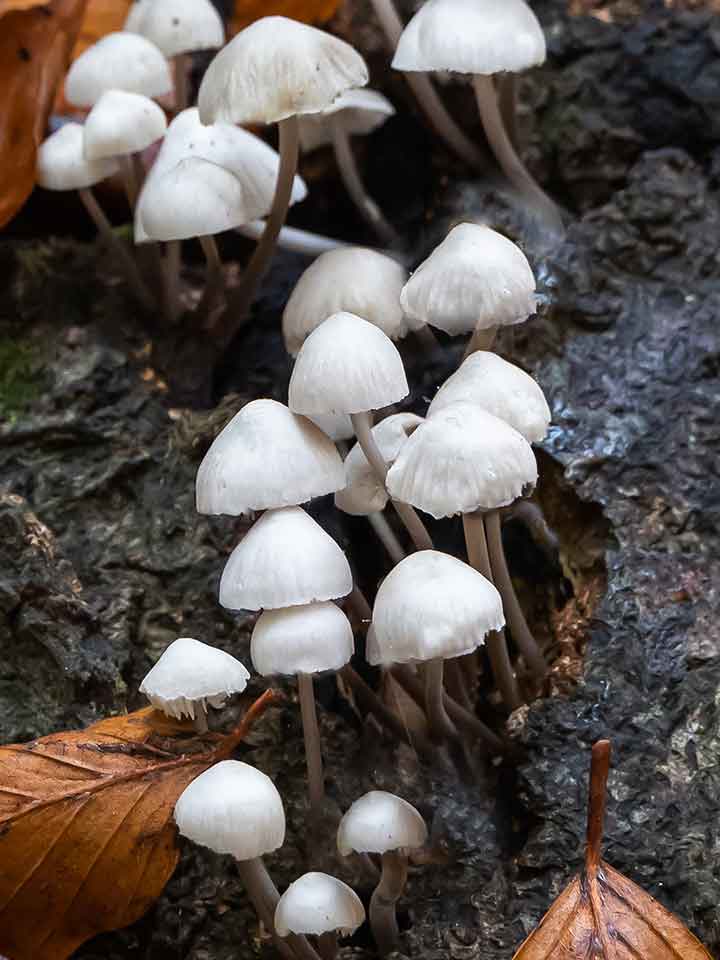
It should be noted that for the advanced mushroom hunter there are perhaps 300 species in the UK worth gathering for the table – but there are a similar number which are poisonous rather than simply inedible, and about 30 that could land you in intensive care or worse. In some cases, there’s no known antidote and death isn’t only painful, it’s lingering. You have been warned!
The world of mushrooms is full of big numbers. One single mushroom will typically release two billion or so spores over a matter of three or four days. One patch of mycelium may continue doing so, in years that are favourable, for at least a millennium. Imagine a tube the size of your head extending to the outer atmosphere. This virtual tube contains on average about two billion spores. These can survive in space, and we’ve almost certainly already taken some to Mars on the outside of a spacecraft. Spores can withstand very high levels of radiation and being buried in coal seams for millions of years. The clouds of spores over rainforests seed droplets of rain and are a big factor in the high precipitation.
Mycelium, the name for the organism of fungal cells that scavenges soil and dead wood for nutrients, joining together the root systems of trees and other plants, is a means by which trees communicate their environmental needs to each other and share the nutrients they’ve harvested from sunlight and carbon dioxide with their young. No wonder then that trees feed up to 80% of the carbohydrates they manufacture each day to the fungi, in return for mineral nutrients, enhanced health and immunity. Everybody’s gut microbiome contains about 240g of living fungi, which help us digest complex carbohydrates.
What’s the best way to learn to identify fungi? Slowly is the answer, in the care of an expert practitioner who can guide you while you take your first steps. Many good foraging instructors can be found on the Association of Foragers website, or you could contact your local county fungus group, where a great deal of expertise will be found. I run seasonal walks for the Chiltern Society which are listed in their magazine and you can find out more about me at thewildside.co.uk.
Dedicated to the memory of Roger Phillips, who has inspired many on this road.

